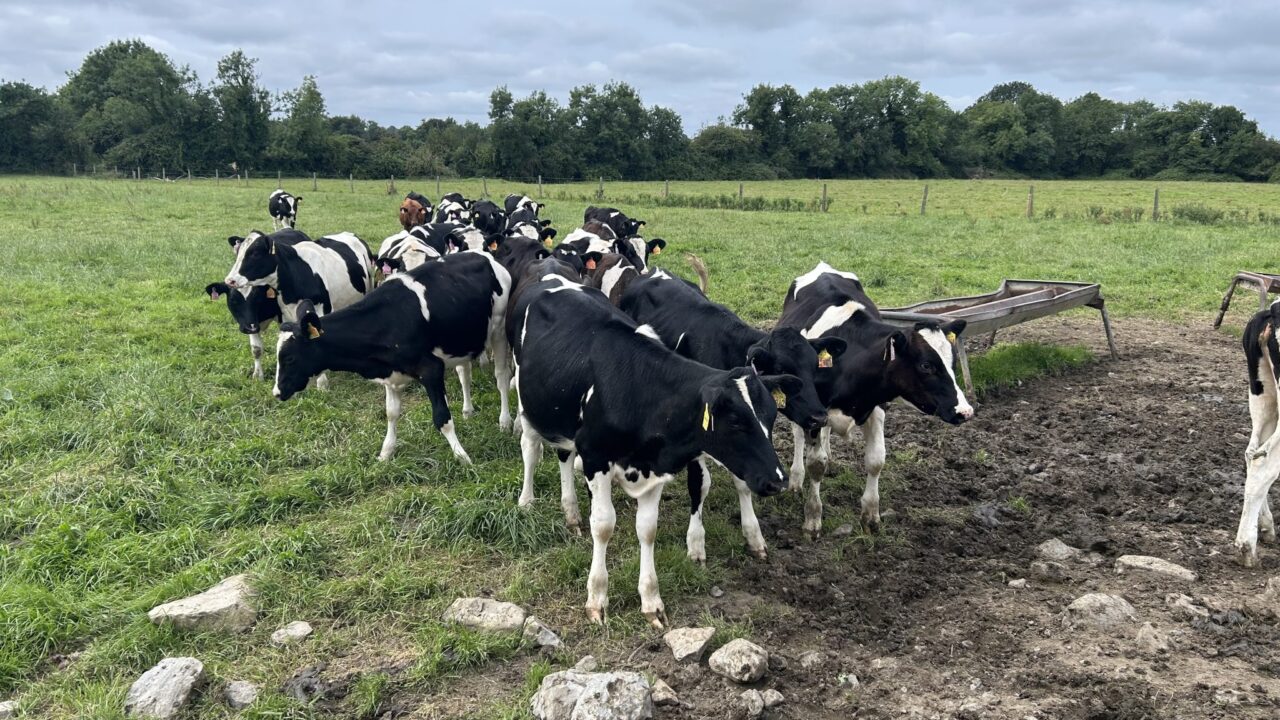Coming into the autumn months, it is a good idea to take out the scales and weigh your replacement heifer calves.
Establishing your weanling heifer weights at this time of the year will give you time to correct below target calves from August to September, before they are back off grass and housed for the winter.
Ensuring that your replacement calves are reaching their target weights relative to their age is crucial for the future productivity and profitability of the herd.
There can be a huge range in growth performances of heifer calves throughout the rearing period, but getting all of your replacements on the same target will impact when they go in calf and the profitability of the replacements.
Heifers that calve down under target tend to have poor fertility, an inability to reach their full production potential, poor health and resistance, and tend to be culled from the herd relatively quick.
Heifer calves
This is why it is so important to be constantly monitoring performance, as the first summer of grazing is crucial. It is not uncommon for variations in calves weight gain to vary from 12-30kg per month, according to Teagasc.
With such huge variation, it can often result in heifers often being underweight, or even overweight, when it comes to the breeding season and you want to get them in calf.
Overweight and underweight heifers have shown to be at a disadvantage when it comes to fertility and milk production performance, meaning weighing your heifers is crucial to the profitability of your farm.
Making sure your calves are on target or rectifying the few that are not on target, is going to have a major impact on the farm’s bottom line.

This is why the most important management practice for heifer rearing is regular weighing, as it will allow you assess decisions to date and plan for the months ahead.
Through regular weighing and monitoring, it allows you to identify any individual animals that may need some extra attention.
Your heifers should be at least 30% of their mature bodyweight at this stage. This can calculated through the average maintenance figure in the herd.
However, if your maintenance figure is only reflective for a number of cows and Economic Breeding Index data is unavailable for several cows in the herd, weighing around 8-10% of the mature cows in the herd will give you a fair understanding of the mature bodyweight.
Weight targets for February-born dairy heifer calves in August based on mature bodyweight and the maintenance index figure, are as follows:
Maintenance index EBI (€)
-10
0
10
20
30
Mature weight (kg)
690
640
590
540
490
Target kg for the end of August
207
192
177
162
147
The table above shows the targets for mid-to-late August weights based on mature weight. A farmer should calculate the group average and identify the calves that are behind the average.
The calves behind the target should be possibly grouped on their own and allocated access to more concentrates and fodder until they catch up with the rest of the heifers.
Ensure that all calves are fit and healthy as sometimes, with underweight calves, diseases such as summer scour, lungworm, stomach worms, coccidiosis or pneumonia affect the calves, leading to severe weight loss and even death if not nipped in the bud.
Farmers need to make sure that all calves are dosed regularly, vaccination protocols followed, and that calves have access to fresh grass regularly, water, and fibre through hay or straw.
Calves at this time of the year should have access to high quality grass, preferably through a strip wire allocation to encourage grazing all of the stem while introducing extra concentrates if needed to meet target weights.
Calves should be eating at least 2.2% of their target bodyweight by now, which equates to about 4kgDM/ day for a Friesian-type calf.

